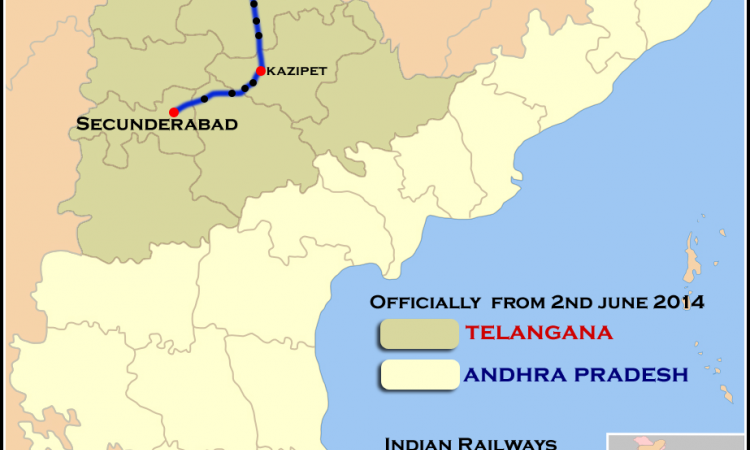
Telangana formed but no change in water allocation
On June 2, Andhra Pradesh was finally divided into Telangana and residual Andhra, but the division will not affect water allocation in the two regions owing to the Andhra Pradesh Reorganisation Act. However, there will be a change in the utilisation of water under existing projects, say Irrigation Department officials. The government has appointed two separate river monitoring Boards that will be responsible for water utilisation under inter-state projects.
High levels of coliform in Kerala's rivers, says study
The Kerala State Pollution Control Board recently released the Water and Air Quality Directory-2013 of the state. According to its findings, the rivers and groundwater of the state have a high level of coliform count which indicates faecal contamination in water. The Board took samples from 128 stations for surface water and 34 stations for groundwater. In one of the samples the coliform level was found to be as high as 14,000 colonies per 100 ml water.
More water in Himalayan rivers owing to melting glaciers: Study
According to high resolution modelling by researchers in Netherlands and Nepal, warming climate will lead to more rain and raise glacier melting in the Himalayas, which will inturn increase run-off in rivers passing through this terrain. As per the report, the rivers that will be affected are the Ganga, Brahmaputra, Salween and Mekong. Rise in runoff in the Indus will be due to increased glaciers melting while more rains will raise the flow in the other four rivers.
Delhi's drinking water and waste management improves: Survey
According to TERI's Environmental Survey 2014 focussing on water and waste, 50% respondents feel that there is an improvement in Delhi's quality as well as availability of drinking water and waste management. Also, 70% of respondents admitted to using more water than required and 17% are ready to bear the cost of using water. As per the survey, 50% of Delhities said priority should be given to the environment over development while 15% believed there was no conflict between the two.
Incorrect figures of India's natural forests: IISC
The Forest Survey of India (FSI) has over-reported its existing forest cover, finds the Indian Institute of Science. The reason for this is that the FSI's definition of forest cover, which is inclusive of manmade forests or monoculture. Owing to this, the nation's forest cover has also increased from 63 million hectares in 1997 to 69 million hectares in 2011. The reported rise in forest cover is due to plantations being included in country's forest cover, claims IISC.
This is a weekly roundup of important news from June1-8, 2014. Also read last week's policy matters updates.
Lead image source: Aditya Madhav in Wikipedia